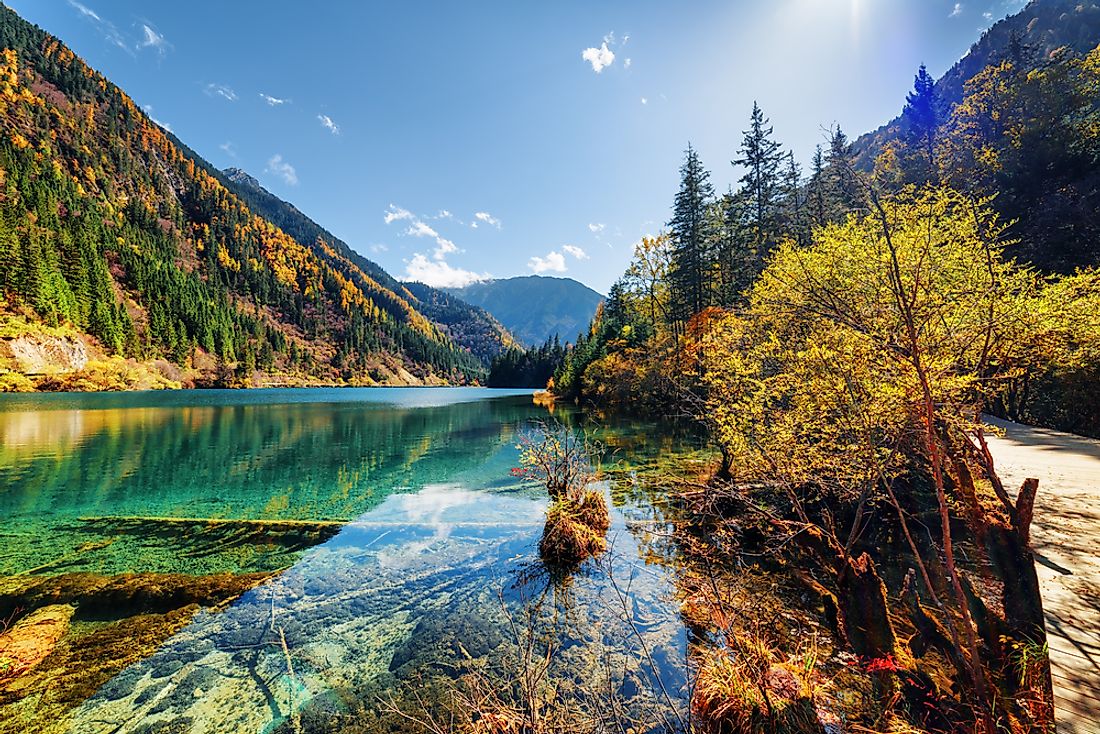Jiuzhaigou National Park - Unique Places Around the World

Jiuzhaigou National Park is located in the Sichuan Province, China. Its terrain comprises of valleys and mountains spread across an area of 278 sqm mi. The park is characterized by multi-level waterfalls, snowcapped mountains, and picturesque lakes. It was inscribed as a World Heritage Site in 1992, and as a World Biosphere Reserve in 1997.
5. Description
Jiuzhaigou Park is part of the Jiuzhaigou Valley which is formed by the Min Mountains that rises on the edge of the Tibetan Plateau. The park is a major tourist attraction in China attracting approximately two Million visitors annually. The natural features in the park which include lakes, mountains, and vegetation has earned it a place as a World Heritage Site and as a World Biosphere Reserve. The Administration Bureau of the Jiuzhaigou World Heritage Site is responsible for administering the park and ensuring the protection of natural resources.
4. Tourism
The park attracts approximately two million visitors annually, making it a major attraction not only in Sichuan Province but also in the country. The extravaganza of the unspoiled natural environment with magnificent waterfalls, the alpine lakes, and the snowcapped peaks makes the scenery look like a fairyland. The valleys and mountains are opened for hiking and camping, and tourists get to enjoy the off-road trails to the higher altitude. Forty percent of the plant species found in China can be found in the park alongside several species of animals. Modern accommodation is not allowed within the park, but several three, four and five-star hotels including Intercontinental and Sheraton hotels are located outside the park.
3. Uniqueness
The snowcapped peaks, the multi-level waterfalls, and the magnificent lakes are some of the unique features in the park. The three valleys; Rize, Zechawa, and Shuzheng are Y-shaped. Jagged alpine mountains rise above the coniferous forest, and from the top of the mountains, one can view the surrounding environment covered by blue lakes, limestone terraces, and caves. It is home to the giant panda and the takin. The quaternary glacial remnants found in the Minshan Mountains offer a beautiful scenery but are also a depiction of how global warming affect natural environment.
2. Habitat
The terrain within the park is mountainous with several valleys. The ecosystem consists of woodlands and temperate broad-leaf forest. A large part of the visited part of the park consists of mixed forests that turn yellow, orange, and red during autumn. Small numbers of the golden snub-nosed monkey and the endangered giant panda inhabit these forests, and their survival have been made a priority.
1. Threats
Several features of the park are under threat, among them is the giant panda. The species is under threat due to destruction of their natural environment and the entry of invasive species. Global warming has also accelerated the melting of glaciers and snow on top of the mountain. The influx of tourists to the park can lead to the construction of modern facilities which interferes with the natural environment. Lumbering once threatened the forest, but rehabilitation programs recovered the lost areas. A buffer zone has been established around the park to prevent encroachment by human beings, at the time of inscription around 800 people lived in the park, but the government and the park administrators have spearheaded a program to resettle them outside the park.











